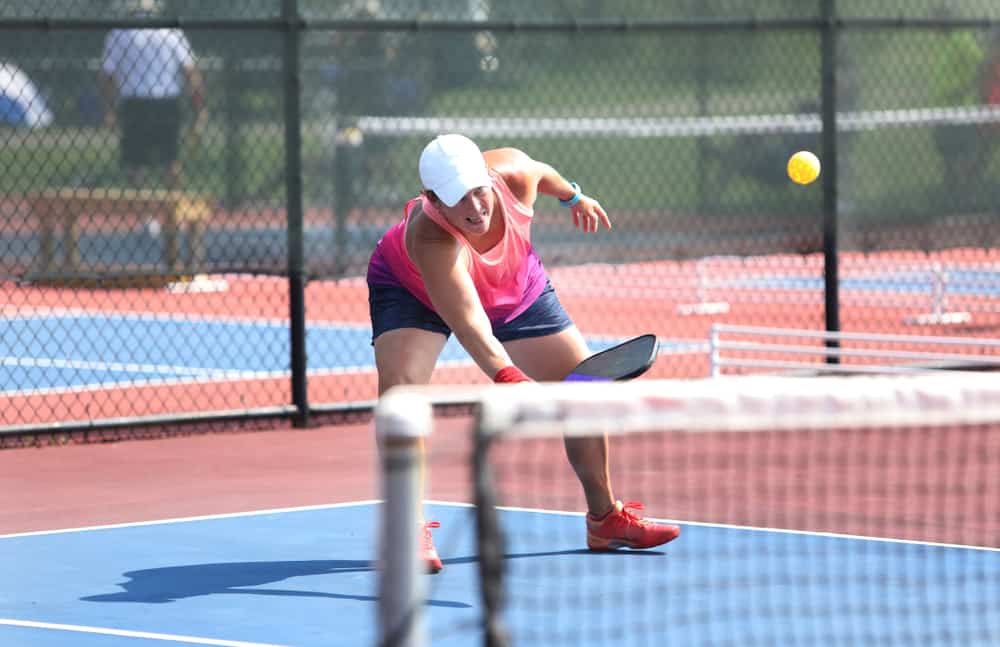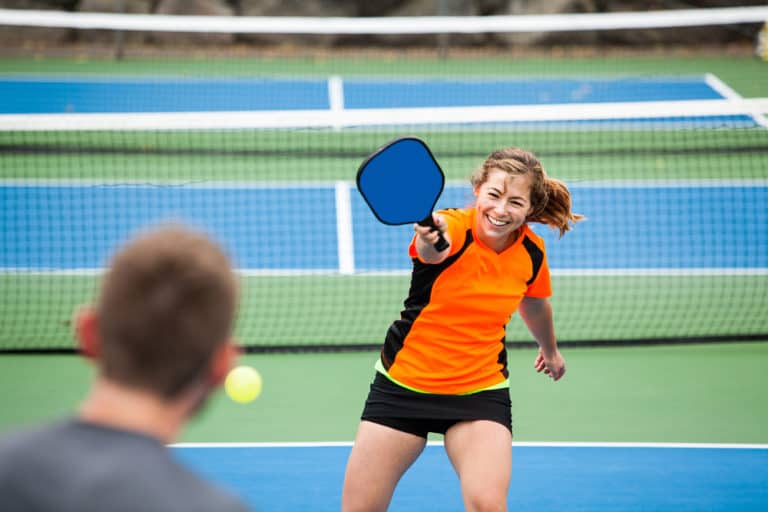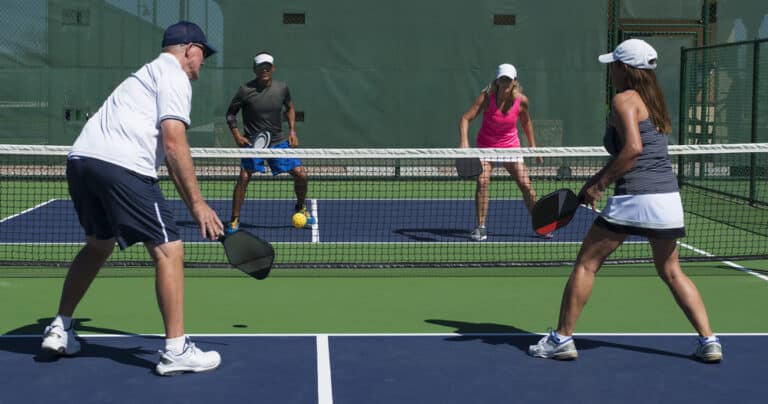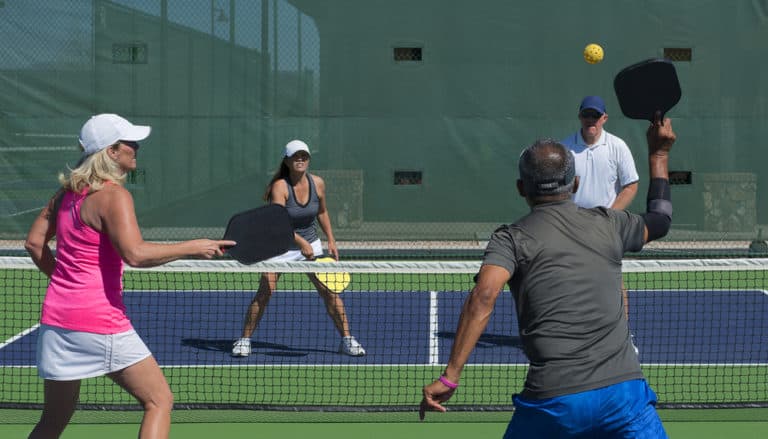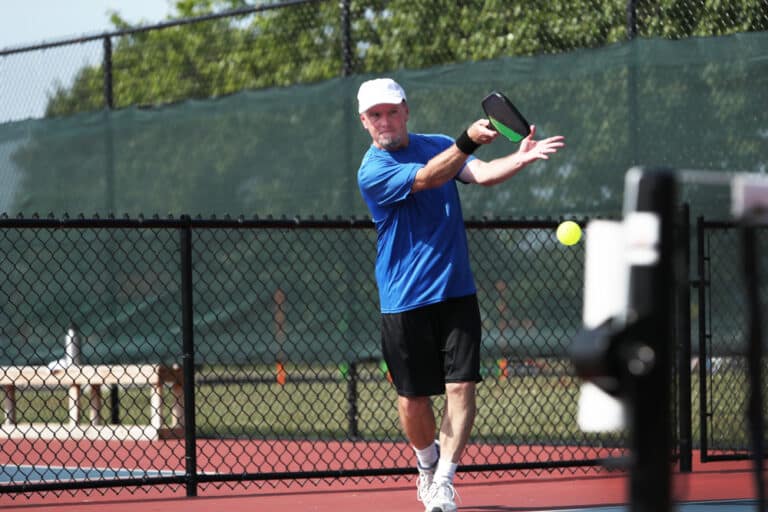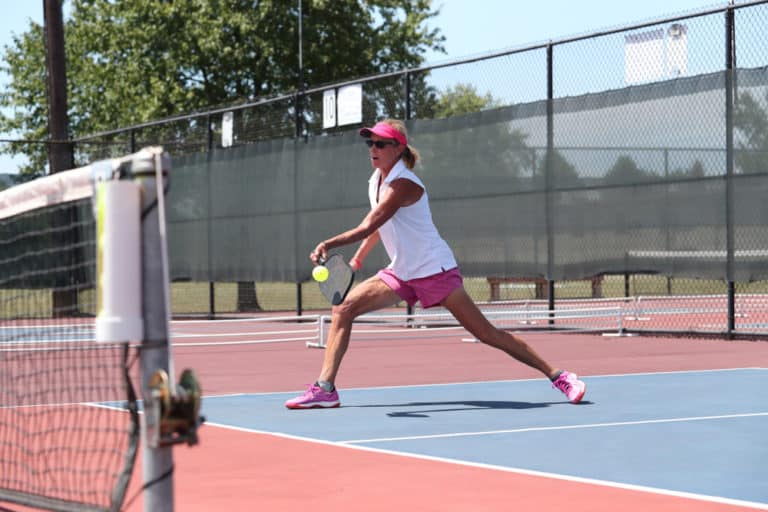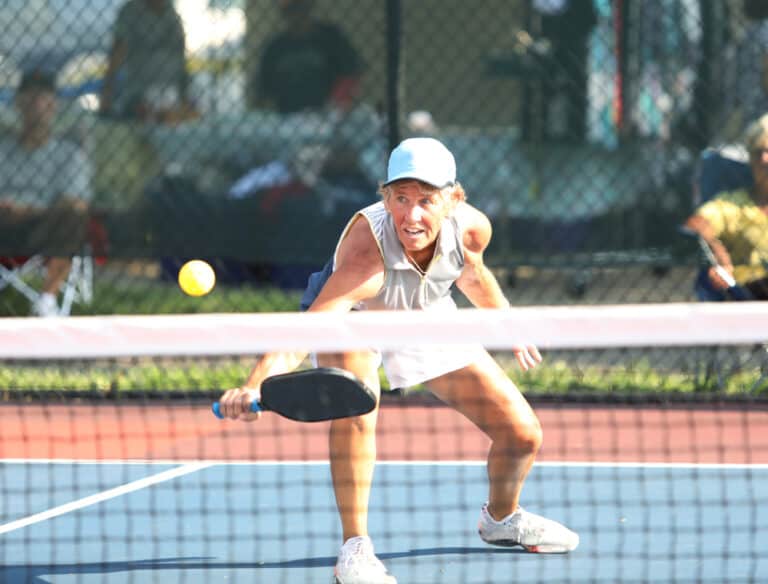Can A Pickleball Hit The Ground?
When watching a game of pickleball, it might sometimes appear as though the players aim to keep the ball flying. Long rallies between the opposing teams dinking the ball at each other over the net can create the impression that the ball isn’t allowed to hit the ground. To ground your understanding of pickleball, consider the stipulations per the rules of pickleball and the experience of avid players.
According to pickleball rules, the ball can hit the ground no more than once whenever it crosses the net; otherwise, the opposition wins the play. On a player’s serve and the first return by the receiving team, the ball must bounce once before they are allowed to hit it.
The rules of pickleball may permit the ball to touch the ground, but there are specific circumstances where it is required to allow it to bounce before hitting it, and in some areas, the ball isn’t allowed to touch the ground at all. Deciding whether the ball bounces or not may also be a question of tactics and capitalizing on the passage of play.
Pickleball Rules Regarding The Ball Hitting The Ground
Long rallies consisting of lobs and dinks are typical in pickleball, which could explain why people may think the ball isn’t allowed to hit the ground; however, it isn’t necessary. If you wish to win a pickleball game, you’ll have to land the ball inside your opponent’s playing area several times.
The rules of pickleball stipulate that the ball must hit the ground at least a few times at the beginning of any point. After that, bounces are optional, depending on the judgment of the team hitting the ball at the time. There are also specific areas where the ball is either prohibited from bouncing or required to bounce.
When the ball lands within certain areas around the court, it is considered a fault, and either you concede a point to the serving team, or you hand the opportunity to serve to your opponent. For instance, if you hit the ball and it bounces outside the outlined surface of the court at any time during the game, it is a fault.
As part of the serve, players could volley the ball or allow it to bounce once before directing it across the net. The ball must be hit at an upward arc and below the waist for a volley serve. A bounce serve requires that the ball hits the ground (even more than once is allowed) and rebounds into the air, but with no added propelling force.
During a player’s serve, the ball may only bounce inside or on one of the lines of their opponent’s relevant service box, apart from the line of the no-volley zone. In the course of normal gameplay, the ball is allowed to touch any line, and it will be a legal play that will win the point if the opposing team doesn’t return the ball over the net.
For the game’s duration, you may let the ball bounce once on your side of the net, but never more, or your opposing team wins the point. After the initial pair of touches of the ball, choosing whether to let the ball bounce is at the player that must return it across the net’s discretion. Still, when you attempt to return the ball, it must clear the barrier directly, or it counts as a fault, and your opponent wins the rally.
Specific Mandatory Bounce Areas In Pickleball
A special rule in pickleball is relevant specifically to the first pair of touches of the ball after a serve. Before either team may volley the ball over the net, it must bounce at least once on each side of the court. The two-bounce rule gets every rally started and allows both teams to get into a position of their choosing before volley shots come into play.
If a player wishes to play the ball within the first seven feet of the net (known as the no-volley zone), they must let it bounce first, or it counts as a fault. Should a player wish to volley the ball in this area, they must ensure that they don’t touch the surface while committing to a shot or directly afterward. Stepping in the no-volley zone after hitting a volley is considered a fault.
In any event, the ball must touch somewhere on the surface of your opponent’s side of the court at least once before you can score or gain the privilege to serve for points.
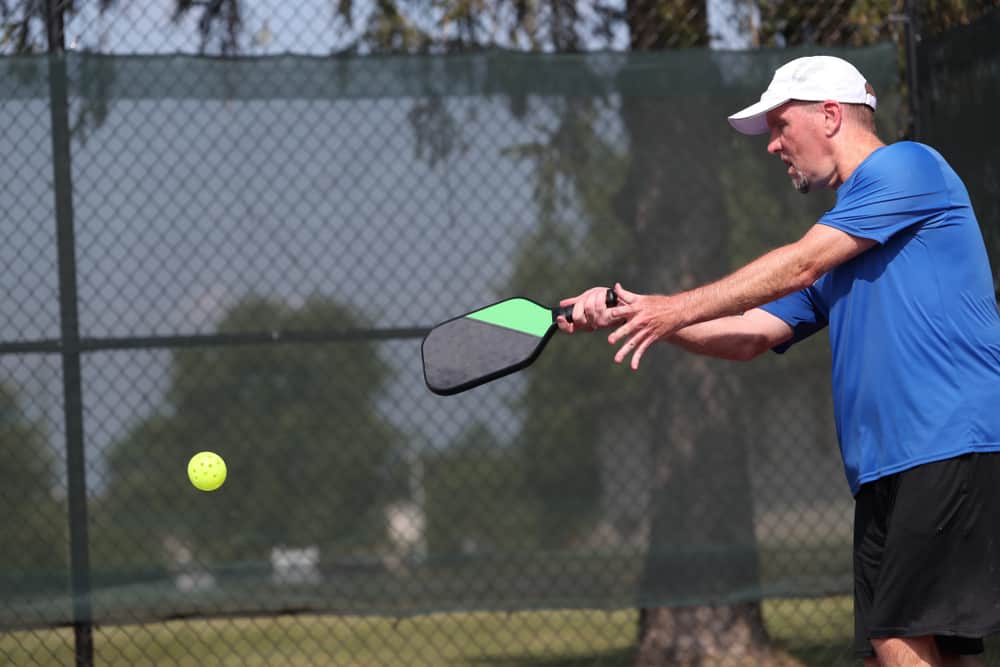
Pickleball Volleys, Air Shots, And Letting The Ball Bounce
After the initial exchanges of every point, it is up to the player receiving the ball to decide whether it would be advantageous to allow the ball to bounce in their court or to hit it back at their opponent directly.
During the game, it may be a strategic choice of a player to hit the ball hard before it hits the ground. Players can put their entire body weight into a shot and make it almost uncatchable when a ball is hanging in the air at a convenient height.
Specific finesse shots can deliberately make the ball stay in the air longer. Lobs and dinks are vital to the arsenal of any competitive pickleball player as they allow you to capitalize on poor positioning from your opponent while buying yourself more time to alter your position.
Dinks are softer shots that lift the ball directly over the net and steeply drop it to the other side. The ball will not bounce high after a dink, and the angle often makes it difficult for the other team to avoid hitting the net on their return. Dinks are aimed at the no volley zone, so the opposition must either be creative with their reply or wait for the ball to bounce and see how much height they can coax from it.
Players will often play lobs when they spot the other team closer to the net and see an opportunity to land a touch deeper in the court. The other team will have to chase after the ball and often will either be unable to reach it or will have to resort to playing a poor return, and then you can hit a winner. Higher balls are susceptible to being carried out of bounds by the wind, so use caution when lobbing.
If your current position isn’t favorable, allowing a ball to bounce once could be wiser while you realign yourself for a better shot. Playing groundstrokes gives you more time to assess whether it will go out of play and count as a point for your team or if you need to play it while also removing some of its speed, which reduces the likelihood of overhitting it in return.
Conclusion
Rallies of dinks and lobs are not uncommon, which leads to the perception that the ball mustn’t touch the ground, but the pickleball can hit the ground and, in some cases, must do so. Directly after the service, the ball must bounce in your court before you are allowed to return it, but after that, you may hit volleys if you wish (unless you are in contact with the no-volley zone).
Deciding whether to let the ball bounce relies on the type of shot you wish to play and if you can gain an advantage from hitting the ball forcefully or with more finesse.
References
- https://www.desertsun.com/story/sports/2022/03/04/pickleball-rules-and-misunderstandings-serves-faults-kitchen/9368019002/
- https://www.healthline.com/health/what-is-pickleball
- https://www.livestrong.com/article/13773692-how-to-play-pickleball/
- https://recsports.msu.edu/imsports/activityrules/pickleball.html
- https://usapickleball.org/what-is-pickleball/pickleball-tips/

